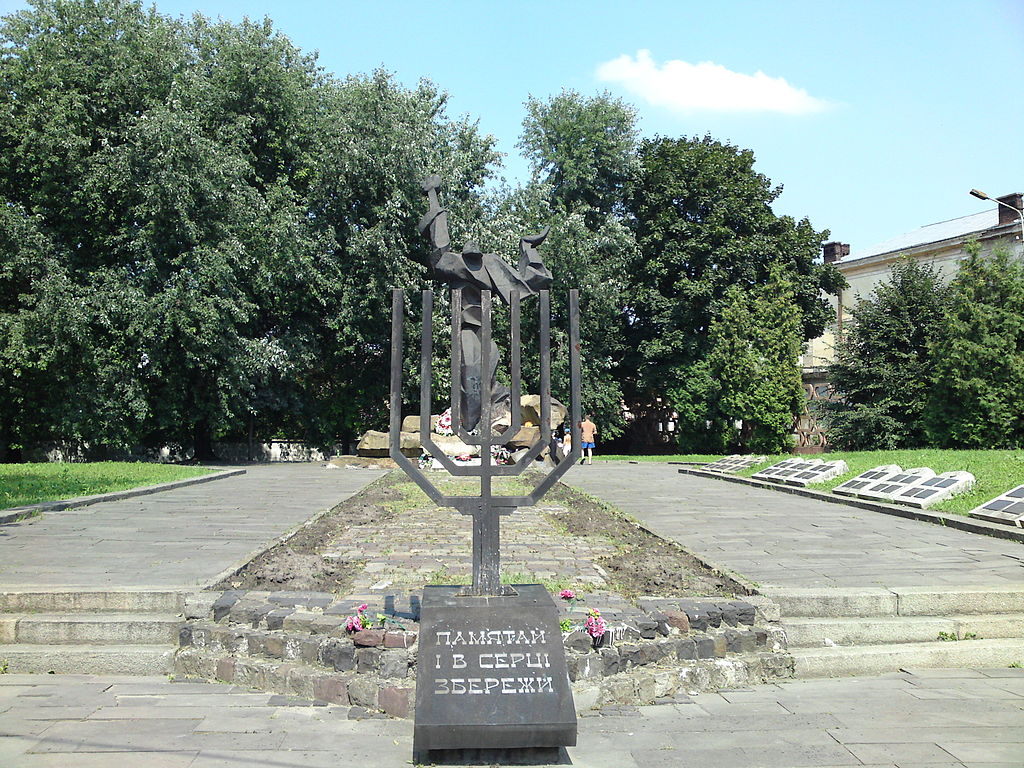The Lviv ghetto is the largest in the occupied territories of the USSR, second only to Warsaw and Lodz. It was created by the order of Major General of the SS Police of the Halychyna district, Fritz Katzman, on November 8, 1941, in the poorest district of Lviv and occupied the territory of the Zamarstinov and Kleparov sections, separated from the south by a railway embankment, from the east - Zamarstinivska Street, from the west – Varshavska Street , from the north – along the bank of the Poltva River.
At that time, about 150,000 Jews lived in Lviv, among them 110,000 natives, and 40,000 refugees from Nazi-occupied Poland. The district designated as a ghetto was the least suitable for life. Ukrainians and Poles who lived in this area had to move to other parts of the city. From November 16 to December 14, 1941, the occupation authorities relocated more than 136,000 Jews to the ghetto. Its territory was isolated from the city by a fence and barbed wire. In this way, the Jewish community was separated from other Lviv residents. The ghetto lacked water and food, medical care, housing, and epidemics spread. The able-bodied Jewish population of the ghetto performed compulsory labor in the Yaniv concentration camp, while those unable to work were systematically exterminated.
On January 20, 1942, the leadership of the Third Reich agreed to a plan for the “Final Solution of the Jewish Question”, so already in the winter and spring of 1942, the Nazis began preparations for the mass extermination of Jews in the ghetto. In March 1942, the first deportation of Jews from the Lviv ghetto to the Belzhets death camp took place. Its victims were 15,000 Jews unable to work, mostly elderly people, women and children. During a large roundup conducted in the ghetto on the night of June 24-25, 1942, more than 2,000 Jews were taken to the Yaniv concentration camp, where about 120 people were left, and the rest were shot in the Pisky tract. In addition, 6,000 prisoners were shot in the ghetto itself.
On the eve of SS Chief Heinrich Himmler's arrival in Lviv in August 1942, the largest of all, the so-called “Big Action”. As a result, approx. 55,000 Jews. Also, during the operation, 1,600 able-bodied Jewish men were transferred to the Yaniv camp, and approx. 1,000 (mostly orphans and hospital patients) were shot in the ghetto itself. At the beginning of September 1942, the territory of the ghetto was limited to several streets and surrounded by a wall. At that time, there were still 65,000 Jews.
At the beginning of November 1942, the Nazis again selected the ghetto prisoners “for professional suitability.” On November 18, 5,000 people were arrested and deported to Belzec. At this time, the ghetto was declared a “closed Jewish camp” and placed under the direct control of the SS. At the end of November, more than 6,000 Jews were transferred to the Yaniv concentration camp, where they were killed. During the “December Action” of 1942, an additional 7,000 Jews were exterminated. During January 5–7, 1943, another action was carried out, as a result of which 15,000–20,000 Jews were shot in the Pisky tract. After that, it was announced that only those Jews who had the appropriate work permit could stay in the ghetto, and the ghetto itself was reorganized into a forced labor camp – “Judenlager Lemberg”. The liquidation of the camp and ghetto continued until June 16, 1943, when the last prisoners organized an armed uprising, killing and injuring several policemen. The 4,000 Jews who remained were transferred to the Yaniv concentration camp and later exterminated in the Pisky tract. 3,000 Jews were killed during the liquidation of the ghetto itself. After that, the Nazis declared Lviv free of Jews – “Judenfrei”.
In general, during the entire period of occupation, the Lviv ghetto housed approx. 138,700 Jews. After the liberation of Lviv in July 1944, less than 300 Jews remained in it, hiding in the basements of destroyed buildings and in the sewers of the city. In memory of the third largest ghetto in Europe, in 1992 the revived Jewish community of Lviv established the Memorial to the Victims of the Lviv Ghetto.
Dilfuza Hlushchenko

